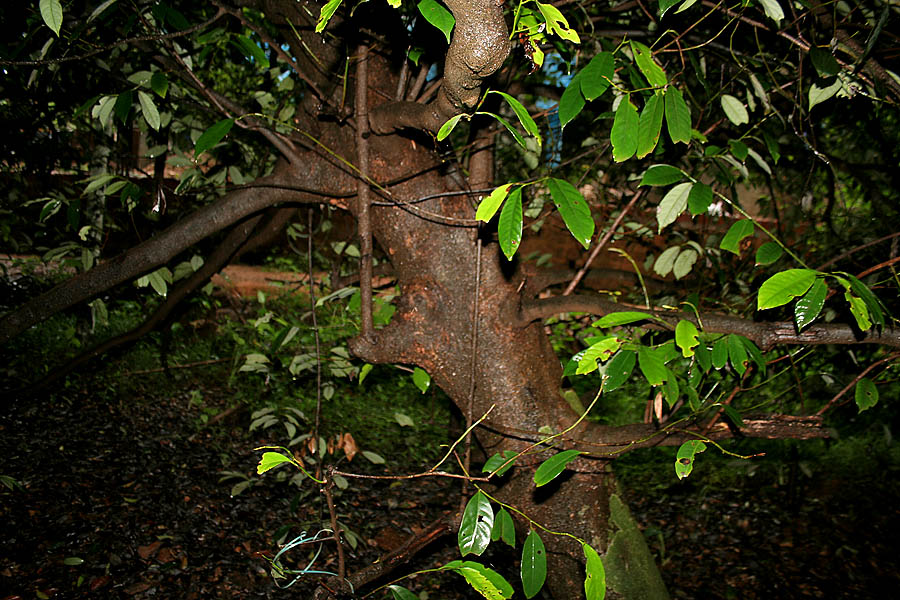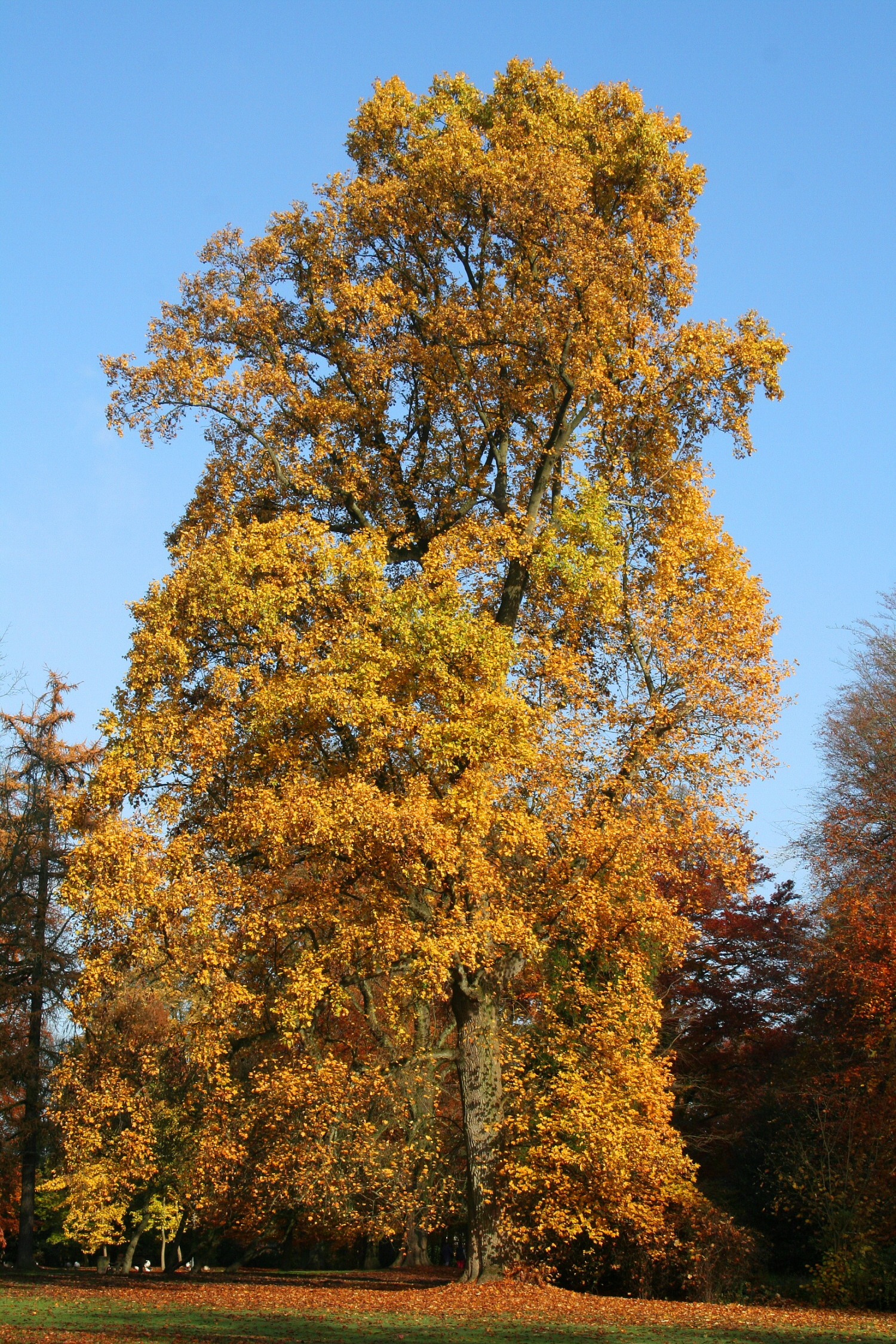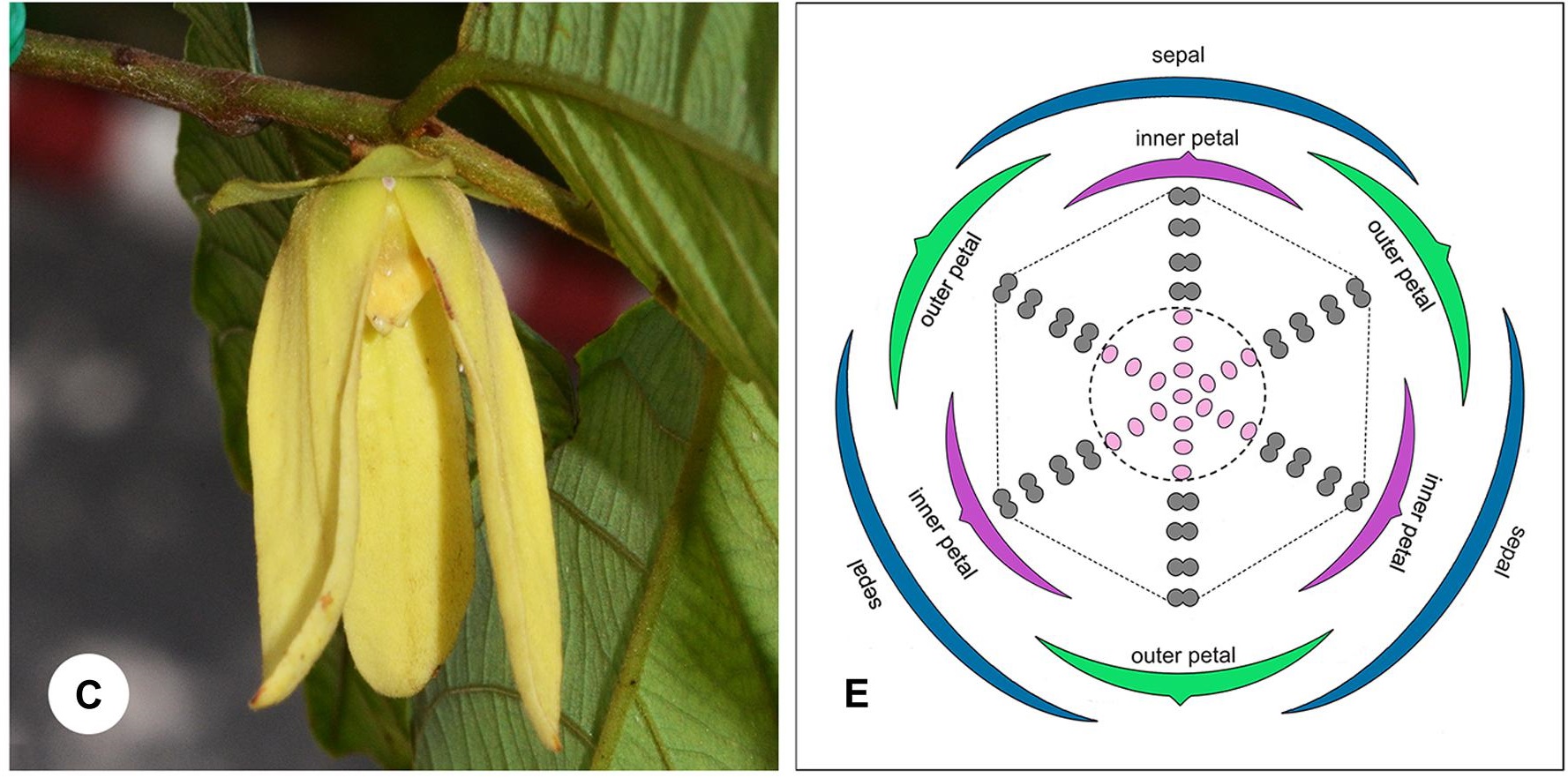|
Magnoliaceae
The Magnoliaceae () are a flowering plant family, the magnolia family, in the order Magnoliales. It consists of two genera: '' Magnolia'' and ''Liriodendron'' (tulip trees). Unlike most angiosperms, whose flower parts are in whorls (rings), the Magnoliaceae have their stamens and pistils in spirals on a conical receptacle. This arrangement is found in some fossil plants and is believed to be a basal or early condition for angiosperms. The flowers also have parts not distinctly differentiated into sepals and petals, while angiosperms that evolved later tend to have distinctly differentiated sepals and petals. The poorly differentiated perianth parts that occupy both positions are known as tepals. The family has about 219 species and ranges across subtropical eastern North America, Mexico and Central America, the West Indies, tropical South America, southern and eastern India, Sri Lanka, Indochina, Malesia, China, Japan, and Korea. Genera The number of genera in Magnoliac ... [...More Info...] [...Related Items...] OR: [Wikipedia] [Google] [Baidu] |
Magnolia
''Magnolia'' is a large genus of about 210 to 340The number of species in the genus ''Magnolia'' depends on the taxonomic view that one takes up. Recent molecular and morphological research shows that former genera ''Talauma'', ''Dugandiodendron'', ''Manglietia'', ''Michelia'', ''Elmerrillia'', ''Kmeria'', ''Parakmeria'', ''Pachylarnax'' (and a small number of monospecific genera) all belong within the same genus, ''Magnolia'' s.l. (s.l. = ''sensu lato'': 'in a broad sense', as opposed to s.s. = ''sensu stricto'': 'in a narrow sense'). The genus ''Magnolia'' s.s. contains about 120 species. See the section Nomenclature and classification in this article. flowering plant species in the subfamily Magnolioideae of the family Magnoliaceae. The natural range of ''Magnolia'' species is disjunct, with a main center in east, south and southeast Asia and a secondary center in eastern North America, Central America, the West Indies, and some species in South America. Magnolias are eve ... [...More Info...] [...Related Items...] OR: [Wikipedia] [Google] [Baidu] |
Liriodendron
''Liriodendron'' () is a genus of two species of characteristically large trees, deciduous tree, deciduous over most of their populations, in the magnolia family (biology), family (Magnoliaceae). These trees are widely known by the common name tulip tree or tuliptree for their large flowers superficially resembling tulips. It is sometimes referred to as tulip poplar or yellow poplar, and the wood simply as "poplar", although not closely related to the true Populus, poplars. Other common names include canoewood, saddle-leaf tree, and white wood. The two extant taxon, extant species are ''Liriodendron tulipifera'', native plant, native to eastern North America, and ''Liriodendron chinense'', native to China and Vietnam. Both species often grow to great size; the North American species may reach as much as in height. The North American species is commonly used horticulture, horticulturally, the Chinese species is increasing in cultivation, and Hybrid (biology)#Hybrid plants, hybr ... [...More Info...] [...Related Items...] OR: [Wikipedia] [Google] [Baidu] |
Magnoliales
The Magnoliales are an order of flowering plants. Well-known members of Magnoliales include: magnolias, Liriodendron, tulip trees, Annona squamosa, custard apples, Asimina triloba, American pawpaw, cherimoyas, Cananga odorata, ylang-ylang, Soursop, soursop fruit, and Myristica fragrans, nutmeg. Classification The Magnoliales include six families: * Annonaceae (custard apple family, over 2000 species of trees, shrubs, and lianas; mostly tropical but some temperate) * Degeneriaceae (two species of trees found on Pacific islands) * Eupomatiaceae (three species of trees and shrubs found in New Guinea and eastern Australia) * Himantandraceae (two species of trees and shrubs, found in tropical areas in Southeast Asia and Australia) * Magnoliaceae (about 225 species including magnolias and Liriodendron, tulip trees) * Myristicaceae (several hundred species including nutmeg) APG system The APG system (1998), APG II system (2003), APG III system (2009), and APG IV system (2016) place thi ... [...More Info...] [...Related Items...] OR: [Wikipedia] [Google] [Baidu] |
Liriodendron Tulipifera
''Liriodendron tulipifera''—known as the tulip tree, American tulip tree, tulipwood, tuliptree, tulip poplar, whitewood, fiddletree, lynn-tree, hickory-poplar, and yellow-poplar—is the North American representative of the two-species genus ''Liriodendron'' (the other member is ''Liriodendron chinense''). It is native to eastern North America from Southern Ontario and possibly southern Quebec to west to Illinois, and east to southwestern Massachusetts, then south to central Florida and Louisiana. The tulip tree is the tallest tree of the temperate deciduous forest. It can grow to more than in virgin cove forests of the Appalachian Mountains, often with no limbs until it reaches in height, making it a very valuable timber tree. This species is also fast-growing, without the common problems of weak wood strength and short lifespan often seen in fast-growing species. In 2024 the unusual combination of fast-growing with strong wood was explained. No longer called a hardwood, ... [...More Info...] [...Related Items...] OR: [Wikipedia] [Google] [Baidu] |
Magnolia Virginiana
''Magnolia virginiana'', most commonly known as sweetbay magnolia, or merely sweetbay (also laurel magnolia, swampbay, swamp magnolia, white bay, or beaver tree), is a member of the magnolia family, Magnoliaceae. It was the first magnolia to be scientifically described under modern rules of botanical nomenclature, and is the type species of the genus ''Magnolia''; as ''Magnolia'' is also the type genus of all flowering plants (magnoliophytes), this species in a sense typifies all flowering plants. Taxonomy ''Magnolia virginiana'' was one of the many species described by Carl Linnaeus. Description ''Magnolia virginiana'' is an evergreen or deciduous tree to 30 m (100 ft) tall, native to the lowlands and swamps of the Atlantic coastal plain of the eastern United States, from Florida to Long Island, New York (state), New York with a disjunct native population found on Cape Ann in northeastern Massachusetts. Whether it is deciduous or evergreen depends on climate; it is ... [...More Info...] [...Related Items...] OR: [Wikipedia] [Google] [Baidu] |
Whorl (botany)
In botany, a whorl or verticil is a whorled arrangement of Leaf, leaves, sepals, petals, stamens, or Gynoecium#Carpels, carpels that radiate from a single point and surround or wrap around the stem or stalk. A leaf whorl consists of at least three elements; a pair of opposite leaves is not called a whorl. For leaves to grow in whorls is fairly rare except in plant species with very short Plant stem, internodes and some other genera (''Galium'', ''Nerium'', ''Elodea'' etc.). Leaf whorls occur in some trees such as ''Brabejum stellatifolium'' and other species in the family Proteaceae (e.g., in the genus ''Banksia''). In plants such as these, crowded internodes within the leaf whorls alternate with long internodes between the whorls. The Morphology (biology), morphology of most flowers (called cyclic flowers) is based on four types of whorls: # The Sepal, calyx: zero or more whorls of sepals at the base # The Petal, corolla: zero or more whorls of petals above the calyx # The Stam ... [...More Info...] [...Related Items...] OR: [Wikipedia] [Google] [Baidu] |
Cenomanian
The Cenomanian is, in the International Commission on Stratigraphy's (ICS) geological timescale, the oldest or earliest age (geology), age of the Late Cretaceous epoch (geology), Epoch or the lowest stage (stratigraphy), stage of the Upper Cretaceous series (stratigraphy), Series. An age is a unit of geochronology; it is a unit of time; the stage is a unit in the stratigraphic column deposited during the corresponding age. Both age and stage bear the same name. As a unit of geologic time measure, the Cenomanian Age spans the time between 100.5 and 93.9 million years ago (Mya). In the geologic timescale, it is preceded by the Albian and is followed by the Turonian. The Upper Cenomanian starts around at 95 Mya. The Cenomanian is coeval with the Woodbinian of the regional timescale of the Gulf of Mexico and the early part of the Eaglefordian of the regional timescale of the East Coast of the United States. At the end of the Cenomanian, an anoxic event took place, called the Cenomani ... [...More Info...] [...Related Items...] OR: [Wikipedia] [Google] [Baidu] |
North America
North America is a continent in the Northern Hemisphere, Northern and Western Hemisphere, Western hemispheres. North America is bordered to the north by the Arctic Ocean, to the east by the Atlantic Ocean, to the southeast by South America and the Caribbean Sea, and to the south and west by the Pacific Ocean. The region includes Middle America (Americas), Middle America (comprising the Caribbean, Central America, and Mexico) and Northern America. North America covers an area of about , representing approximately 16.5% of Earth's land area and 4.8% of its total surface area. It is the third-largest continent by size after Asia and Africa, and the list of continents and continental subregions by population, fourth-largest continent by population after Asia, Africa, and Europe. , North America's population was estimated as over 592 million people in list of sovereign states and dependent territories in North America, 23 independent states, or about 7.5% of the world's popula ... [...More Info...] [...Related Items...] OR: [Wikipedia] [Google] [Baidu] |
Mexico
Mexico, officially the United Mexican States, is a country in North America. It is the northernmost country in Latin America, and borders the United States to the north, and Guatemala and Belize to the southeast; while having maritime boundary, maritime boundaries with the Pacific Ocean to the west, the Caribbean Sea to the southeast, and the Gulf of Mexico to the east. Mexico covers 1,972,550 km2 (761,610 sq mi), and is the List of countries by area, thirteenth-largest country in the world by land area. With a population exceeding 130 million, Mexico is the List of countries by population, tenth-most populous country in the world and is home to the Hispanophone#Countries, largest number of native Spanish speakers. Mexico City is the capital and List of cities in Mexico, largest city, which ranks among the List of cities by population, most populous metropolitan areas in the world. Human presence in Mexico dates back to at least 8,000 BC. Mesoamerica, considered a cradle ... [...More Info...] [...Related Items...] OR: [Wikipedia] [Google] [Baidu] |
Central America
Central America is a subregion of North America. Its political boundaries are defined as bordering Mexico to the north, Colombia to the southeast, the Caribbean to the east, and the Pacific Ocean to the southwest. Central America is usually defined as consisting of seven countries: Belize, Costa Rica, El Salvador, Guatemala, Honduras, Nicaragua, and Panama. Within Central America is the Mesoamerican biodiversity hotspot, which extends from southern Mexico to southeastern Panama. Due to the presence of several active geologic faults and the Central America Volcanic Arc, there is a high amount of seismic activity in the region, such as volcanic eruptions and earthquakes, which has resulted in death, injury, and property damage. Most of Central America falls under the Isthmo-Colombian cultural area. Before the Spanish expedition of Christopher Columbus' voyages to the Americas, hundreds of indigenous peoples made their homes in the area. From the year 1502 onwards, Spain ... [...More Info...] [...Related Items...] OR: [Wikipedia] [Google] [Baidu] |
India
India, officially the Republic of India, is a country in South Asia. It is the List of countries and dependencies by area, seventh-largest country by area; the List of countries by population (United Nations), most populous country since 2023; and, since its independence in 1947, the world's most populous democracy. Bounded by the Indian Ocean on the south, the Arabian Sea on the southwest, and the Bay of Bengal on the southeast, it shares land borders with Pakistan to the west; China, Nepal, and Bhutan to the north; and Bangladesh and Myanmar to the east. In the Indian Ocean, India is near Sri Lanka and the Maldives; its Andaman and Nicobar Islands share a maritime border with Thailand, Myanmar, and Indonesia. Modern humans arrived on the Indian subcontinent from Africa no later than 55,000 years ago., "Y-Chromosome and Mt-DNA data support the colonization of South Asia by modern humans originating in Africa. ... Coalescence dates for most non-European populations averag ... [...More Info...] [...Related Items...] OR: [Wikipedia] [Google] [Baidu] |
West Indies
The West Indies is an island subregion of the Americas, surrounded by the Atlantic Ocean, North Atlantic Ocean and the Caribbean Sea, which comprises 13 independent island country, island countries and 19 dependent territory, dependencies in three archipelagos: the Greater Antilles, the Lesser Antilles, and the Lucayan Archipelago. The subregion includes all the islands in the Antilles, in addition to The Bahamas and the Turks and Caicos Islands, which are in the Atlantic Ocean, North Atlantic Ocean. The term is often interchangeable with "Caribbean", although the latter may also include coastal regions of Central America, Central and South American mainland nations, including Mexico, Belize, Honduras, Panama, Colombia, Venezuela, French Guiana, Guyana, and Suriname, as well as the Atlantic Ocean, Atlantic island nation of Bermuda, all of which are geographically distinct from the three main island groups, but culturally related. Terminology The English term ''Indie'' is deri ... [...More Info...] [...Related Items...] OR: [Wikipedia] [Google] [Baidu] |






